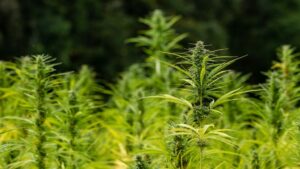Seed dormancy is a natural state used by plants to protect seed from growing at inappropriate times. In common domestic species, dormancy is low and often not a problem after a few months of storage or after ripening. Some native species can have a decade or more of dormancy.
There are different types of dormancy and different causes. Generally, a seed is considered dormant if it is not growing, not considered dead and it has been supplied the appropriate moisture, light, temperature, and gases for that species. Dormancy-breaking techniques not recommended for a crop kind in the Canadian methods and procedures for testing seed must be listed in the remarks section of the report of analysis. Common dormancy-breaking techniques are:
KNO: Potassium nitrate is a widely used chemical used to break dormancy. It is not well understood how it works, but it is thought that it increases a seed’s sensitivity to light, which tricks certain species into growing.
Prechill or Midchill: For many crops, a three-to-five day prechill may break the dormancy. The seed is put in at 5 C to 10 C in moist conditions. The seed must be wet; storing dry seeds at a low temperature does not break dormancy. These treatments extend the length of your test by the number of days spent in the chill. When dormancy is suspected during the test, an analyst may midchill the ungerminated seeds.
GA: Gibberellic acid is a natural plant growth hormone. GA is likely essential for germination, and when it is naturally low or not being released, dormancy can exist. Therefore, the addition of GA to a germination test can break dormancy.
Predry or Preheat: Similar to a prechill test, but seed is placed at room temperature or 35-40 C in dry conditions with air circulation for five to seven days before planting. It is used for cereal crops that have come through a wet harvest.
Light: Some seeds need a light intensity of 750-1250 lux for at least eight hours every 24-hour cycle in order to break dormancy.
Scarification: Cutting or scratching the seed coat of a seed that will not allow moisture in.
Seed analysts determining dormancy should employ the use of the Tetrazolium test for viability to ensure the seed is not dead.
You may wonder how this is important to your bottom line. Using an accurate germination test to figure out the value of a seed crop and the best seeding rates can save you money. In some cases, the germination number alone is not enough. When seed is considered dormant, there is a potential for it to be broken and make grade or be worth more money. In most cases, dormant seed cannot be added to the percentage of normal seedlings for grading purposes, but it may pay to try different dormancy-breaking techniques as well as retesting the sample after a waiting period to see if it has matured. In the case of some small seeded legumes, hard seed (dormant) may be added to the germination for grading.
In western wheatgrass, dormant seed as determined by the Tetrazolium test may also be added when grading. Do not forget to check your report of seed analysis for notes on fresh or dormant seed so you can make wise decisions on the use of a seed lot.











